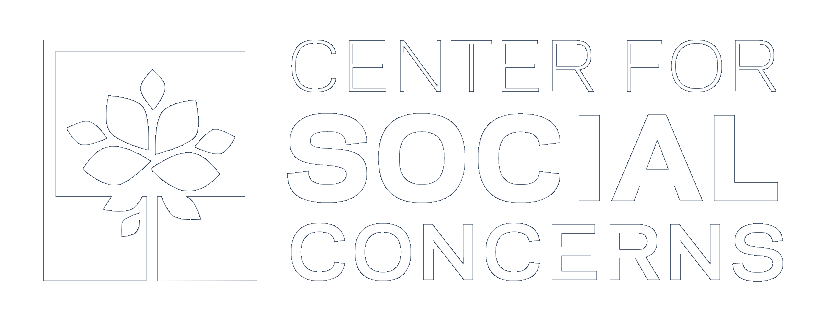Over 10 years ago, educators and leaders in medicine noticed with concern the advent of social media and immediately recognized ways in which physician and medical student use of these applications might undermine the doctor-patient relationship, professional identity formation, and ethical standards. Following the first set of guidelines issued by the AMA in 2010, the American College of Physicians and the Federation of State Medical Boards developed a more in-depth policy statement and guidelines helping physicians and, more importantly, students and residents navigate the opportunities and challenges of participating in social media as part of their personal and professional lives. (1) These guidelines reinforced an important distinction between the interactions we have with patients and colleagues on an individual basis and our public interactions via social media. Namely, that these interactions are not private, but take place in a public forum; that the boundaries between professional and social spheres blur in ways that can undermine ethical behavior and professional standards; and that the reach of social media is not only far—it is permanent. (2)
How much should we as physicians be concerned? Social media participation among practicing physicians is evolving and not yet ubiquitous. For example, although a recent study of an albeit limited sample of physicians found that 70% of these physicians have a social media presence (Facebook, LinkedIn, Twitter, etc.), 90% of that group posted zero times per month. (3) The study also pointed to where utilization is much higher—namely among female physicians and younger physicians. Interestingly, men in academic medicine were more likely to report professional benefits of social media use—such as invited talks and increased scholarship opportunities—compared to women, who had fewer followers, retweets, and likes compared with their male peers. (4) Increasingly, “altmetrics” of online activity are used as a measure of scholarly impact, suggesting that women are taking on the risks of social media participation without experiencing as many of its potential rewards. (4) For example, social media elicits a range of reactions from those engaged. Different users may interpret the same post in multiple ways and assign meaning perhaps not in the ways that the writer intends. This inconsistency raises the question of is self-promotion on social media helpful in career growth or is it harmful? Does this perception change depending on the identity of the individual doing the posting? For instance, women who engage in career or salary negotiation may experience very real social penalties that men do not. (5, 6)
Students and residents are increasingly using social media to enhance their visibility in the process of applying for admission throughout each stage of the medical education continuum. During the COVID-19 pandemic, when all admissions processes across the continuum were conducted virtually without an opportunity to participate in in-person interviews, the impact of an online presence may have assumed a greater significance, but whether the impact was positive or negative is hard to discern on an individual basis. We know all too well that bias and discrimination in health professions education are real and that learners experience prejudice and discrimination that causes harm and limits their career opportunities. (7) There are reasonable concerns that the perceptions of social media presence may be mediated by the identities of the poster, conferring advantages on some and hurting others.
Unexamined use of social media threatens several of the key roles that medical students and residents must play during the long process of becoming a physician—specifically, self-assessment and managing ambiguity. (8) The dynamic and complex process of taking on the mantle of the profession is mediated by multiple factors both within the formal educational experience and outside of it. Those who reach the highest level of identity formation, known as “interindividual” in Robert Kegan’s seminal framework of personal identity formation and growth, do not perceive themselves as having a single identity and are open to multiple influences. (9) To achieve this, individuals must elevate the interests of others and act on their behalf. To the extent that social media encourages a relentless focus on the self, it threatens the ability of all individuals to achieve this level of growth. (10) In a profession which must be devoted to the needs and interests of those who are sick and suffering, and therefore highly vulnerable, we must take great care that self-focus does not jeopardize the underlying principles of the profession.
Finding the balance between the opportunities and the dangers of social media continues to challenge our profession and our society. Social media plays an important role in building networks, sharing information, and increasing collaborations outside of specialties and institutions. (4) Nevertheless, the profession of medicine should pay careful attention to risks that undermine both the profession and the health of the public. The promulgation of misinformation is the most dangerous. When information posted is not credible and then combined with algorithms used by social media, we are corralled into echo chambers where dissent cannot be heard. This not only limits our opportunities for growth and interaction with people who have different viewpoints than our own, but the misleading information seriously damages the trust on which doctor-patient relationships depend, and public health demands. Recent reports demonstrate that expressing an opinion on social media makes it harder to change our minds by making us less receptive to new information or additional information that suggests we might be wrong. (11) The inability to change our minds undermines our capacity for intellectual humility and realistic self-assessment—key skills that physicians must possess and utilize to effectively care for patients. Above all, cultural and social humility are essential to the health of the public and to the health of our democracy.
References:
- Farnan JM, Snyder Sulmasy L, Worster BK, et al. Online medical professionalism: Patient and public relationships. A policy statement from the American College of Physicians and the Federation of State Medical Boards. Ann Intern Med. 2013; 158(8):620-627.
- Kind T. Professional guidelines for social media use: A starting point. AMA J Ethics. 2015; 17(5).
- Hameed I, Oakley CT, Ahmed A, et al. Analysis of physician use of social media. JAMA Network Open. 2021; 4(7): e2118213. doi:10.1001/jamanetworkopen.2021.18213.
- Woitowich NC, Arora VM, Predergrast T, et al. Gender differences in physician use of social media for professional advancement. JAMA Network Open. 2021;4(5): e219834. doi:10.1001/ jamanetworkopen.2021.9834.
- Roy B, Gottlieb AS. Organizational culture, practices, and patterns of interactions that drive the gender pay gap in medicine: Second-generation gender bias and other complexities. In Closing the Gender Pay Gap in Medicine, Ed. Gottlieb AS. Switzerland: Springer Nature, 2021.
- Bowles HR, Babcock L, Lai L. Social incentives for gender differences in the propensity to initiate negotiations: Sometimes it does hurt to ask. Organ Behav Hum Decis Process. 2007;103(1): 84-103
- Josiah Macy Jr. Foundation. Addressing Harmful Bias and Eliminating Discrimination in Health Professions Learning Environments. Conference Recommendations: February 24-27, 2020. Downloaded from https://macyfoundation.org/ on December 9, 2021.
- Cruess RL, Cruess SR, Boudreau D, et al. A schematic representation of the professional identity formation and socialization of medical students and residents: A guide for medical educators. Acad Med. 2015; 90:718-725.
- Kegan R. The Evolving Self: Problem and Process in Human Development. Cambridge, Mass: Harvard University Press; 1982.
- Burnell K, Ackerman RA, Meter DJ, et al. Self absorbed and socially (network) engaged: Narcissistic traits and social networking site use. J Res Pers. 2020 February; 84: doi:10.1016/j.jrp.2019.103898
- Lynch MP. Is social media killing intellectual humility? 2020. Downloaded from Big Think: Neuropsych on December 9, 2021



